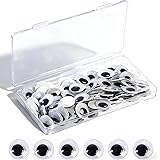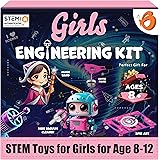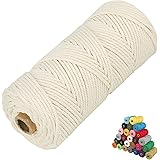Unleash Creativity: Crafting Your Own Speedy DIY Toy Car
Have you ever wondered how to spark your child’s imagination while teaching them valuable hands-on skills? If you just watched the fantastic video above demonstrating how to construct a “SUPER EASY and FUN!” speedy DIY toy car, you’ve witnessed the magic firsthand. This guide will delve deeper into the process, transforming those quick visual steps into a comprehensive blueprint for success. We’ll explore the ‘why’ behind each component, expand on the simple measurements shown, and provide additional insights to ensure your homemade vehicle not only moves but truly zooms!
Building a DIY toy car offers more than just fleeting entertainment. It’s an incredible opportunity to introduce fundamental concepts of engineering, physics, and basic electronics to young minds. This project acts like a mini-STEM workshop right in your living room, fostering critical thinking and problem-solving skills in a highly engaging manner. Imagine the satisfaction your child will feel as their creation comes to life, a testament to their own ingenuity and effort.
More Than Just Play: The Educational Power of a DIY Toy Car
Engaging in a project like building a DIY toy car is immensely beneficial for a child’s development. It’s not merely about assembling parts; it’s about understanding how things work. Kids learn about simple machines, the transfer of energy, and even basic circuitry when they connect a battery to a motor. This hands-on experience solidifies theoretical knowledge, making complex ideas more accessible and tangible. It provides a unique opportunity for active learning, which is often far more impactful than passive observation.
This creative endeavor also cultivates fine motor skills as children cut, glue, and attach small components. Patience and attention to detail are naturally honed throughout the construction process. Furthermore, the collaborative aspect, whether working with a parent or a friend, encourages teamwork and communication. Think of it as constructing a miniature engineering marvel, where every decision, from material choice to axle placement, directly impacts the final performance of the speedy car.
Your Essential Toolkit: Gathering Materials for Your Homemade Car
The beauty of this DIY toy car project lies in its simplicity and the accessibility of its materials. Most items can be found around the house or easily purchased at a craft store. You’ll primarily need sturdy cardboard for the chassis, which serves as the car’s main body, providing the structural integrity for all other components. For the wheels, you might repurpose plastic bottle caps or cut precise circles from thicker cardboard. Remember, smoother edges will result in a faster ride.
The heart of your speedy car is a small DC motor, often found in old electronic toys or readily available online. This motor will convert electrical energy into mechanical motion. For power, the video visually highlights **DURACELL** batteries, suggesting their reliability and common availability. You’ll also need some wires to connect the battery to the motor, a battery holder, a switch for easy operation, and strong adhesive like hot glue for secure assembly. Having a pair of scissors or a craft knife (with adult supervision) and a ruler will ensure precise cuts and measurements.
Precision in Motion: Understanding the Key Measurements
Throughout the video, various measurements flash across the screen, acting as crucial guides for your construction. These include **2cm**, **1cm**, **5cm**, **6cm**, and **9cm**. These numbers are not arbitrary; they dictate the dimensions of your car’s chassis, the length of its axles, and the precise placement of the motor. Just like a chef follows a recipe, these measurements ensure your toy car is balanced and functional.
For instance, a **9cm** length might define the overall body, while **5cm** could be the width, creating a stable base. The **2cm** and **1cm** measurements are likely critical for spacing the axles or mounting the motor accurately. Precise cutting based on these dimensions prevents wobbling and ensures the wheels spin freely. Taking the time to measure twice and cut once will save effort and lead to a more efficient and speedy DIY toy car. These tiny details make all the difference, transforming a simple craft into a miniature engineering challenge.
Bringing It to Life: Step-by-Step Assembly of Your Speedy Car
Once your materials are gathered and precision cuts are made, the assembly process can begin. Start by constructing the car’s main body from your cardboard, ensuring it’s robust enough to house all components. Next, attach the axles and wheels. The video’s visual cues regarding measurements will be invaluable here for correct spacing and alignment. Ensure the wheels can spin freely without rubbing against the chassis, which can hinder the car’s speed.
Integrating the motor is the next exciting step. Secure it firmly to the chassis, often near one of the axles. The video features a visual cue of “Press here,” likely indicating where the motor needs to be firmly attached or how wires are connected. Wiring the motor to the battery holder and switch forms a simple circuit. Remember to strip the ends of your wires slightly for good contact and twist them securely, or solder them if you have the appropriate tools and supervision. This connection is the engine that will power your fantastic new DIY toy car.
The Spark of Speed: Simple Electronics for Your Young Engineer
At the core of your speedy DIY toy car’s movement is a basic electrical circuit. The **DURACELL** battery, mentioned twice in the video, acts as the power source, providing the electrical energy. This energy flows through wires to the small DC motor. Inside the motor, the electrical energy is converted into mechanical energy, causing the motor shaft to spin. This spinning shaft is then connected to an axle, which in turn spins the wheels, propelling your car forward. It’s a fundamental demonstration of how electrical power can create motion.
When working with batteries and wires, it’s always important to prioritize safety, especially with children. Use appropriate voltage batteries for your motor and ensure all connections are secure to prevent short circuits. A simple switch can be added to easily turn the car on and off, preventing unnecessary battery drain and offering a more interactive experience. Think of the battery as the car’s fuel tank and the motor as its engine; together, they make your creation zoom!
Customization and Beyond: Enhancing Your DIY Toy Car
After your speedy DIY toy car is fully assembled and zipping across the floor, the fun doesn’t have to stop there. This is where creativity truly takes the wheel! Encourage personalized decoration with markers, paint, or even glitter. You can experiment with different body shapes, turning your car into a futuristic racer, a sleek sports model, or even a mini monster truck. Adding small details like headlights (LEDs with resistors) or a tiny spoiler can further enhance its appearance and even its aerodynamics.
For those feeling adventurous, consider experimenting with gear ratios by attaching different sized gears to the motor and axle, altering the car’s speed or torque. You could also try different wheel materials or designs to see how they impact performance on various surfaces. This open-ended approach fosters continuous learning and innovative thinking, pushing the boundaries of what a simple DIY toy car can achieve. The possibilities are endless when it comes to refining and personalizing your very own speedy creation.







